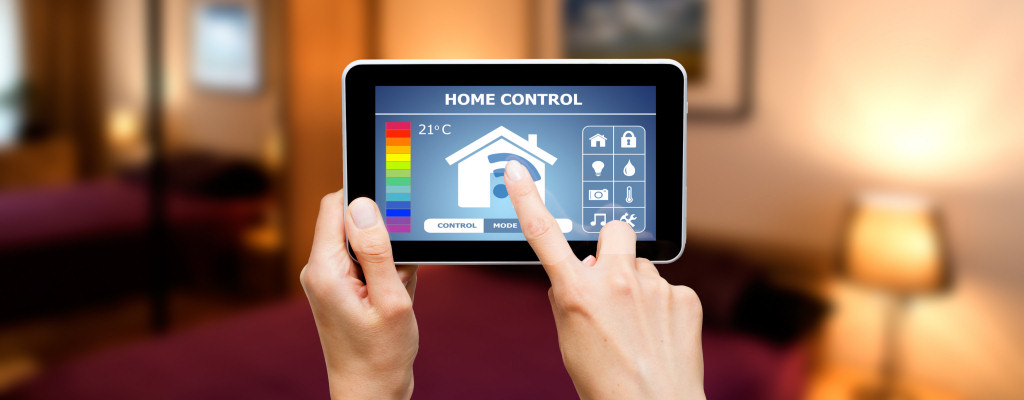You might have the most advanced air conditioning system on the market, but without a thermostat, you won’t be able to use it. This seemingly insignificant piece of your HVAC system has one simple and essential job – operating your heating and cooling system and controlling the temperature inside your home.
A thermostat accomplishes this via a temperature sensor coupled with a switch to turn your system on and off as needed automatically. When your thermostat is installed and powered, you can set the temperature you prefer inside your home. The thermostat’s built-in sensor then detects the indoor temperature and turns your system on or off to keep your home at your desired temperature.
There are two ways of classifying the types of thermostats you can have in your home. The first classification is based on the thermostat’s mode of operation, and it can be considered one of two types: live voltage and low voltage. Most homes use a low voltage thermostat. The second classification focuses on the features and functions of the thermostat.
To break down the different types of thermostats and to help you decide which one you want in your home, we’ve compiled an overview of the common types.
Programmable
You’ll find a programmable thermostat in most homes currently. These thermostats’ basic features let you preset your preferred temperatures. Once programmed, the thermostat handles the rest and adjusts the temperature in your home as needed.
For example, you can set the temperature you’d like while you are at work, then another for when you’re home. Additionally, you can set some models based on the day of the week, allowing you to set different temperature ranges for weekends than you do on the weekdays. This adjustability helps you save on energy costs since your HVAC system doesn’t need to be running all day, every day.
Non-programmable
Like a programmable model, a non-programmable thermostat usually has a digital display but doesn’t allow for advanced functionality. Instead, all settings and changes are input manually. The main attraction of a non-programmable thermostat is that it’s an inexpensive option. However, it requires a bit more attention to achieve maximum savings on your energy costs – that is, you’ll be fiddling with it often.
Mechanical
A mechanical thermostat is the oldest and most basic type. They’re being phased out for newer digital thermostats in most applications. The main reason is that older mechanical thermostats used mercury to gauge temperature – a toxic substance. Later versions use a metal apparatus that expands and contracts with temperature changes, making them much safer. Neither method makes for accurate temperature readings, as there’s typically a delay as the device slowly reacts to temperature changes.
While a mechanical thermostat is the most inexpensive option compared to the other types, we recommend using something more advanced. Upgrading from a mechanical to a programmable thermostat will save on energy costs and help keep your home a lot more comfortable.
Smart devices
Technologically advanced relative to a mechanical thermostat, a smart thermostat takes the functionality of a programmable device one step further. Also sometimes called a learning thermostat, this device takes your inputs over the course of a few days and learns your temperature preferences.
Once your smart thermostat learns your schedule and your preferences, you can leave it to do its thing as it makes temperature adjustments based on the time of day and season. A smart thermostat also detects when your home is unoccupied and lowers power usage accordingly to save energy. When your family is home, it sets your home to your preferred temperature once again.
Many smart thermostats are controlled remotely with a wireless device over a wi-fi network, such as a smartphone. Have you ever wanted your air conditioner to turn on when you’re headed home, so you arrive to a cool, comfortable home? Now you can! Even better, after a few days, the thermostat will handle this action all by itself.
If you’re looking for the widest array of features and to save the most on your energy bill, installing a smart thermostat will get you there.
Choosing the right thermostat
Deciding on which type of thermostat comes down to your needs and the functionality you want. A smart thermostat will cost more initially, but it has the potential to save you a lot of money on your energy bill in the long run. If you’re looking for something simple, though, a basic programmable or digital thermostat is still a great choice that won’t break the bank.
If you have more questions about which type of thermostat would be best in your home, give us a call. We’re happy to help you not only make the best decision for your family, but we’ll also install your new thermostat when you’re ready. That’s how neighbors should treat neighbors!™


Comments are closed